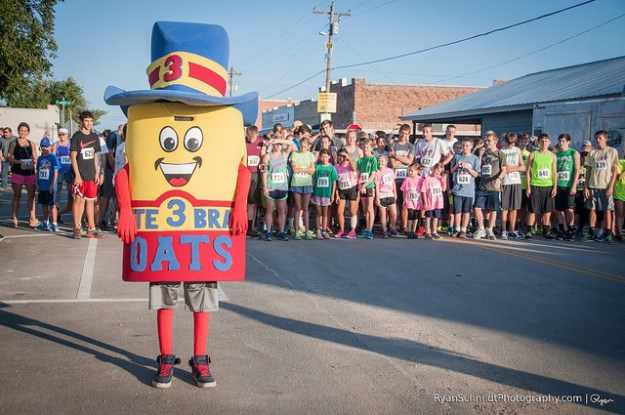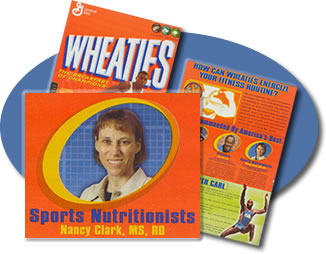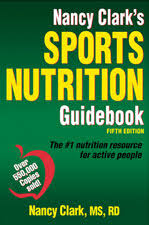I really love oatmeal. I have it nearly every day for breakfast, with the exception of a few weekend days at the diner. When I am going to bed at night, I rest my head and smile gently, knowing that it will soon be time for oatmeal once more.
Earlier this week, my roommate asked me if I wanted the remainder of her bag of rolled oats from Trader Joe’s. I said “duh” but it made me start to wonder about the different cuts of oats and the pros and cons of each. I wondered if there were any nutritional differences that might be due to the cut and whether or not quick oats, rolled oats, or steel cut might be tastier, healthier, or a better choice for a runner! I did a little google searching for any differences between the oats. I first needed to learn what oats are and how they become food.
Oats start as part of an oat groat, these large hulled kennels from cereal grains. There are other types of groats as well (wheat, millet, barley, etc.) and they are fiber rich whole grains. They include the bran and the endosperm and are typically processed before consumption.

Then there are 3 different levels of processing with oats.
Steel-cut oats are the least processed. They are the largest cuts of whole oat groats, usually chopped into a couple of pieces. These largely unprocessed cuts take the longest to fully cook, typically 20-30 minutes on the stove top. They can also be soaked overnight to reduce cooking time or can be cooked in a slow cooker. Steel-cut oats have a texture of chewy, individual kernels.
Rolled oats (or old-fashioned oats) are created by steaming, soaking, pressing and rolling the oat groats into sheets and then cut. This processing allows for a faster cook time than steel-cut oats. They can absorb more water. These are the type of oats typically seen in baked good or oat bars. And apparently they aren’t a favorite of my roommate’s.
Quick oats are the most processed of the trilogy. They come to you already pre-cooked, rolled, pressed, chopped, and ready to be eaten (almost). They cook in about a minute or 2 in the microwave and are regularly used in place of rolled oats in many baking recipes, but they will cook faster.

Steel-cut, rolled, and quick oats
What are the nutritional differences? None, apparently. All styles of oats are a great source of fiber and protein, they will lower cholesterol and blood sugar, and they will make you poop. Read here to learn about the specific nutritional value in oats.
But Tess, oats are very bland and boring. Is there anything I can put in my oatmeal to make it taste better? Excellent question, dear reader, and yes—there are many great accessories to make your oatmeal breakfast complete. But remember, everything you add to oatmeal brings along its own nutritional content. So don’t add only high-sugar products and avoid refined sugars if possible.
Got a pen? Here are all things that will make oatmeal great again (#MOGA):
- Peanut Butter (protein)
- Fruits, such as apples, bananas, peaches, and berries (natural sugar)
- Seeds, such as chia seeds, flax seeds, pumpkin seeds (omega-3s)
- Spices, such as cinnamon and nutmeg (add that flavor)
- Sweeten the deal, add honey or maple syrup (but not too much)
- Fruit jams/preserves
- Yogurt, add whole milk or soy milk dairy
**things I have put in oatmeal before but are definitively not healthy**:
- Chocolate chips or Hershey kisses
- Sprinkles
- Chocolate syrup
Fun facts about oats (this sections is important).
Now I want you to go grab a bowl of oatmeal and eat up while I share with you some mildly interesting facts about oats. Did you know that in parts of the UK, oats are called “corn”? “Corn” is actually the term that is used to refer to a country’s major staple crop. In the US, we call it “corn” but other grains in different countries have the name also.
Another fun fact is that you can take a bath with oats and get really beautiful. If you add a cup of finely ground oatmeal to your bathwater, you can treat inflamed skin conditions such as eczema, chicken pox, rashes, and sunburns. Wow!
Fun Fact # 3: there is a town in the US that celebrates this wonderful food. Yes, that’s correct, there is an Oatmeal Festival in Bertram, Texas. It seems like maybe the town of Oatmeal, Texas (not far from Austin) would be a better venue.

Runners line up at the 2014 Run For Your Oats 3.3 mile race at the Oatmeal Festival
A final fun fact about oatmeal is that it inspired a popular skincare brand, one that you might even have in your bathroom right now. Aveeno products are named after a species called Avena Sativa… also known as the oat!
In summation, oats are pretty great. In fact, they might be the greatest of all time. Oat is GOAT.


